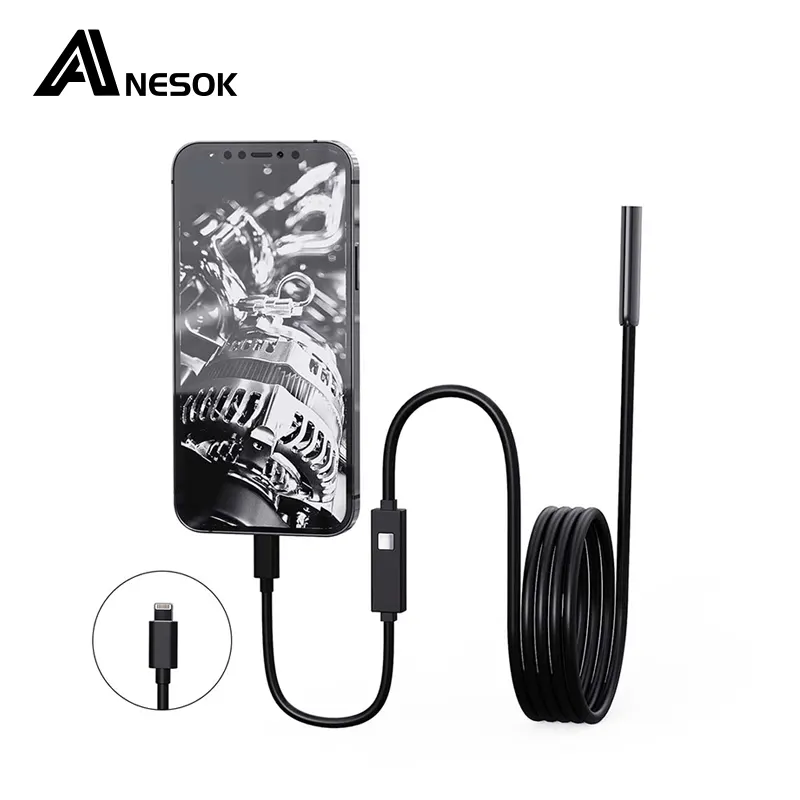- English
- שפה עברית
- Bosanski
- Punjabi
- O'zbek
- Español
- Português
- русский
- Français
- 日本語
- Deutsch
- tiếng Việt
- Italiano
- Nederlands
- ภาษาไทย
- Polski
- 한국어
- Svenska
- magyar
- Malay
- বাংলা ভাষার
- Dansk
- Suomi
- हिन्दी
- Pilipino
- Türkçe
- Gaeilge
- العربية
- Indonesia
- Norsk
- تمل
- český
- ελληνικά
- український
- فارسی
- தமிழ்
- తెలుగు
- नेपाली
- български
- Latine
- Қазақша
- Azərbaycan
- Slovenský jazyk
- ქართული
- Română
- Slovenski
- मराठी
- Srpski језик
- Hrvatski
- Eesti Keel
What is an Industrial Endoscope?
2024-10-26
An industrial endoscope, also known as an industrial video endoscope, borescope, or videoscope, is a sophisticated inspection tool that has become indispensable in promptly identifying and eliminating hidden dangers in various industries. This cutting-edge device integrates optics, precision mechanics, electronic technology, and microphotography, pushing the boundaries of human vision and enabling high-quality inspections in challenging environments.

An industrial endoscope is designed to extend human visual capabilities, particularly in situations where direct visual inspection is impossible or impractical. It can operate under extreme conditions such as high temperatures, toxic environments, and nuclear radiation, providing clear and accurate images of the internal workings of machinery and equipment. This capability significantly reduces the need for complex disassembly and potential damage to components, thereby saving maintenance costs and enhancing productivity.
Key Components and Working Principle
An industrial endoscope consists of several key components, including an insertion tube, a lens system, an imaging sensor, a light source, and a control unit. The insertion tube, which is flexible or rigid depending on the application, houses optical fibers and wires that transmit light and image signals. The lens system focuses light onto the imaging sensor, typically a CCD or CMOS chip, which converts the light into electrical signals.
The working principle of an industrial endoscope is based on optical imaging. Light from the integrated or external light source is guided through the insertion tube and focused onto the surface of the object being inspected. The imaging sensor captures this light and converts it into a digital image, which is then displayed on a monitor for analysis.
Applications and Benefits
Industrial endoscopes are widely used across multiple industries due to their unique advantages:
Aerospace Industry: They are essential for inspecting aircraft engines, blades, combustion chambers, and fuselages. This ensures the safety and reliability of aircraft components.
Power Generation: In wind, hydro, and thermal power plants, industrial endoscopes are used to detect defects and monitor the condition of generators and other critical equipment.
Manufacturing: They are invaluable in quality control processes, allowing for the inspection of welds, castings, and assemblies to ensure they meet specifications.
Automotive: Mechanics use industrial endoscopes to inspect the internal workings of engines, transmissions, and other complex components.
Nuclear Industry: In nuclear power plants, they are used for non-destructive testing and inspecting the integrity of reactor components.
The benefits of using an industrial endoscope are numerous. They enable inspections that are faster, more accurate, and less invasive than traditional methods. They also help reduce downtime, prevent costly repairs, and ensure compliance with safety regulations.
Advancements and Future Trends
Continuous advancements in technology are driving the development of new and improved industrial endoscopes. High-definition imaging, 3D visualization, and artificial intelligence integration are among the latest innovations. These advancements are enhancing the capabilities of industrial endoscopes, making them even more versatile and powerful tools for inspection and maintenance.



